You’ll Be Drinking this Whiskey in the Near Future
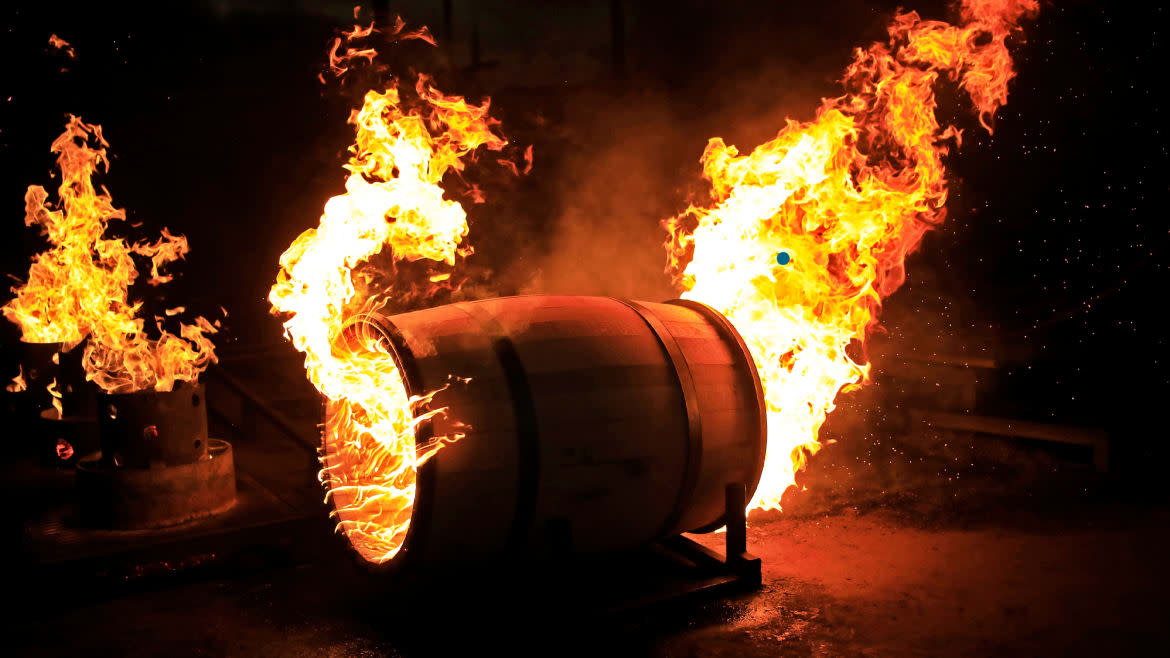
It’s a general rule of thumb in the whiskey industry that up to 80 percent of the flavor of bourbon (or rye) comes from the new oak barrel it must be aged in. So it stands to reason that if you want to get some new flavors in your whiskey, the best way to go about it is to fiddle with the barrel.
To get a sneak peek of what we’ll be tasting in a few years, I talked to some of the leading North American wood specialists about new barrel innovations.
Building a Whiskey Empire in 85 Years
Are the Manhattan & the Martini the Same Cocktail?
My first call was with Andrew Wiehebrink. He’s the director of spirit research and innovation at Independent Stave Company (ISC), the outfit that makes barrels for much of the American whiskey industry. I started by asking him about something we’d talked about before: how hard it is to extend the aging of bourbon without getting too much wood flavor? “We tried to introduce this concept of ‘pre-aging,’” he said, and I think he was serious. “Put [the spirit] in a new barrel for a year, and then finish it in a used barrel. It’s still legally bourbon.” That’s still just a theory, but someone may try it soon.
One thing he has worked on that is being used is the “flash char” technique. Contrary to popular belief, using a new charred barrel for bourbon is a relatively modern idea. “The char system wasn’t even set until the 1950s,” Wiehebrink said. “I read a 1908 American Chemical Society paper about aging whiskey, and there wasn’t a mention of char, not one. For such a ‘traditional’ industry, it’s really not!”
Coopers generally burn the inside of an unused barrel creating a thick layer of char. The charcoal helps filter out impurities, brings out the wood’s innate vanilla flavor and sweetness, and gives the spirit its gorgeous amber color. But it takes years for all of that to happen, since the heat moves “the sweet compounds deep into the wood,” Wiehebrink said. “It takes a long time for whiskey to work into the wood that deep. You get smoke, then spice, then sweet spice, and then finally you get into the caramel and vanilla. But toast it for 45 minutes before you do a really quick char and that puts all the sweet extractives right up front in the oak.”
This process allows you to jump start the flavoring process; Wiehebrink suggests transferring the whiskey to a used barrel after two years, which would allow you to age it for possibly two decades without getting too much oak. During the last year, he has worked with a number of brands experimenting with this technique, including Louisville’s Buzzard’s Roost.
But that’s if you want to create an extra-old whiskey. Most distillers are looking for ways to get flavor in more quickly, or to get better flavor. The search for better flavor has led some to allow the wood to air dry for a longer period after the staves are cut from oak logs. I talked to one small cooperage who was extending this so-called seasoning period to four years and another that was going for seven years.
Maybe they should have talked to Wiehebrink first. “It’s a great story, seven-year-old wood, but I don’t know how much difference it really makes,” he told me. “Seasoning does nothing a proper toast or char can’t do. They’re both breaking down cellulose and such. An aged stave will give you more extractants, but a toast will give you a lot more.”
Wiehebrink works closely with Jane Bowie, the master of maturation and director of innovation at Maker’s Mark Distillery. If you’re familiar with the bourbon brand’s history, you’ll get a chuckle out of the idea of Maker’s Mark having a director of innovation. Until the launch of Maker’s 46 in 2010, it famously had just one product, at one unspecified age (around seven years). I brought that up to Bowie and she laughed.
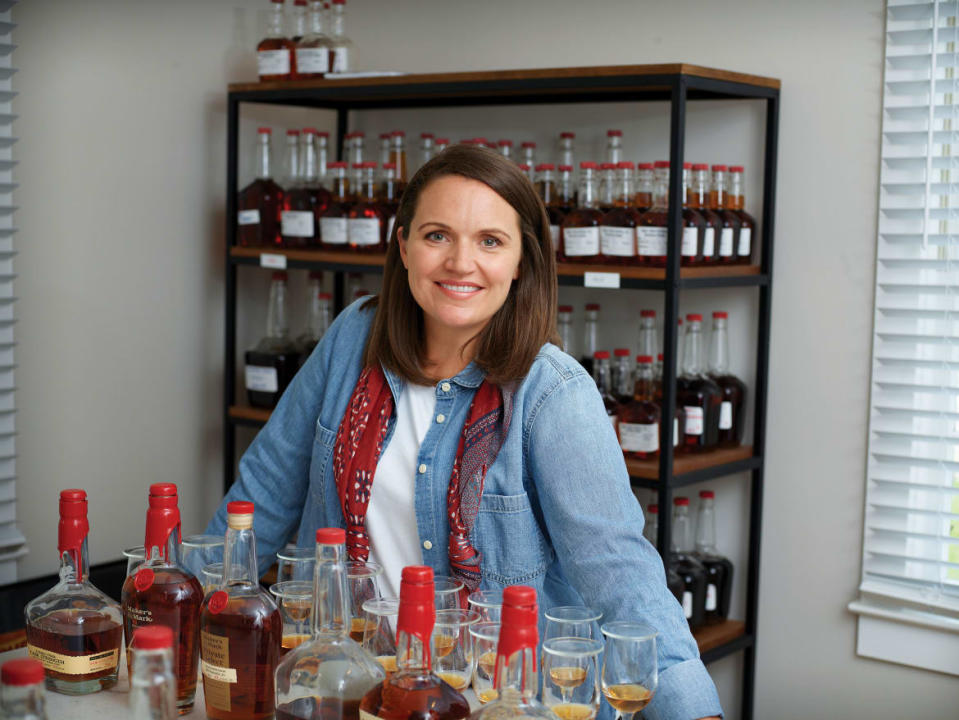
“We had to have an intervention at Maker’s,” she said. “We never had innovation before. It’s still a four-letter word to a lot of our employees.” She says second-generation Maker’s employees are particularly puzzled. “They ask, ‘why are we doing this?’”
I noted that she works very closely with Wiehebrink and his employer ISC. Maker’s went to ISC with the idea for its Maker’s 46 project—a whisky already aged that is finished in a barrel that has additional toasted staves hung inside of it. Maker’s Private Select expanded on that idea by adding additional types of staves that could be selected by individual customers who want to create a unique “private selection” bourbon.
Working with ISC gives Bowie a huge toolbox to play with, though sometimes it can be overwhelming. “It’s fun, and consumers want it,” she said of the constant whirl of new ideas. “But I would say 95 percent of the stuff we do isn’t in line with what we want. I tasted a whiskey last week that tasted like pickles on pumpernickel; all from the wood finishing. It was interesting, but not us.”
What drives the program, then, if you’re looking for flavors that are new, but also recognizable as Maker’s Mark? “For a lot of it,” she said, “we don’t rely so much on the science as we do on sensory. We just tell Andrew what we want in flavor, don’t say anything about what wood or process, and he goes off and experiments. He’s insanely smart. He’s been a huge help.”
When Wiehebrink comes back with ideas, they test. “We don’t do full barrels, we start off doing bottle soaks,” she said, describing putting small pieces of the staves in bottles of new-make whisky. “We taste all blind, because if I know something’s French oak, for example, I’ll start thinking what the taste ‘should’ be. We taste it, and sometimes I can taste the toast, taste the process, and to me, that’s failing.”
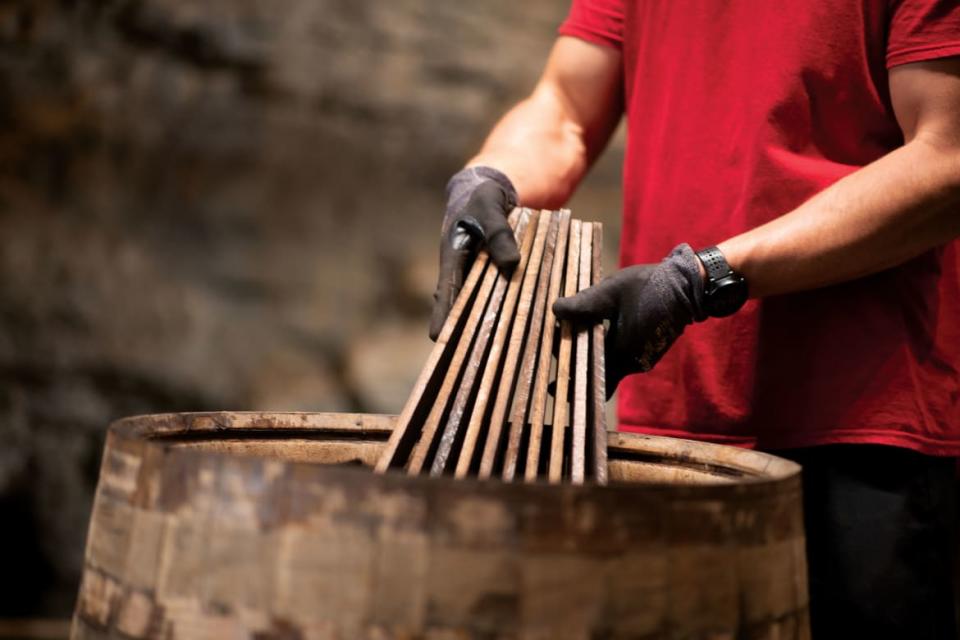
But not all of Bowie’s job is trying new things. “We spend 50 percent of our time studying our own processes, what we’re already doing, to understand that,” she said. “We did a seven-year study on entry proof. We still go in [to the barrel] at 110. We did different entry proofs from 110 up to 125. Changing it just a little made it something you wouldn’t recognize. It wouldn’t be Maker’s. You know entry proof matters, you just never knew how much. Now that we have a department that has the time to look at this stuff, we’re looking at all of it. We want to make sure we’re not doing something for tradition’s sake...just for tradition’s sake.”
So why does Maker’s Mark continue to reevaluate and rethink its process and approach? “Every distillery probably has a different philosophy on innovation,” she said, after thinking a bit. “For us, the customers had been asking for something new for a decade, and we kept saying no. We had to get more responsive. And when we did, we found all these flavors and all this agriculture we didn’t know about! Let’s go learn!”
That changed the whole culture at Maker’s, not just the portfolio. “For years, it was about finding customers and not screwing up that one product,” Bowie said. “We were doing all the work, we just weren’t sharing it with people. 46 and Private Select gave us the confidence to share. That’s it, in a nutshell. This is the right time, I guess, and I was just lucky enough to be here nagging them.”
Dr. Don Livermore, the head blender for Wiser’s in Windsor, Ontario, (still technically a North American whisky maker) has always told me he felt lucky to be able to play with everything he has at his disposal. It’s his contention that Canadian whisky affords more opportunity for innovation than any other whisky...and yet he feels constrained by the market.
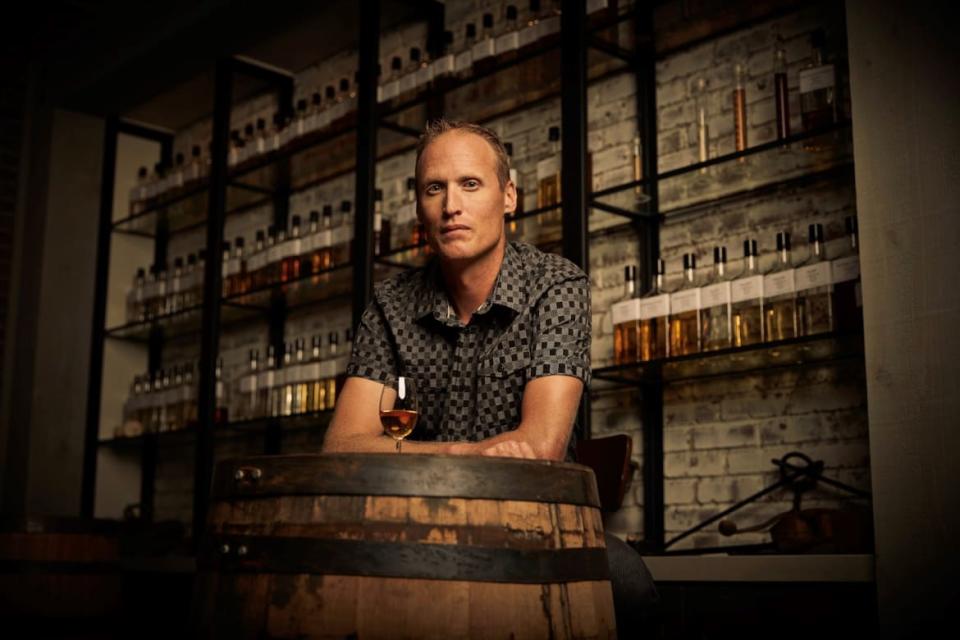
“Probably a lot of us are doing the same experiments,” he guessed. “Wiser’s Seven Rebels used the same kind of barrel inserts as Maker’s 46, and burning the barrels to get a sense of smokiness. Put some of that into the blend, and people just adore it.” Then he noted that Seven Rebels, a collaboration with the British Columbia Liquor Stores, was a one-off, “more like an experimental release.”
Seven Rebels has been so well received, he’s now “playing with different woods.” He’s experimenting with inserts made from maple, hickory, mizunara Japanese oak, beechwood and red oak. While flavor is one thing, there’s also a practical concern about these barrels leaking more than ones made from white oak. “That’s hard to justify.”
Livermore noted a few other things he has to be concerned about as a blender, as a planner and as the one responsible for the long-term flavor and availability of the Wiser’s brands. “I worry about swaying away from tradition, about the long-term taste of a brand,” he said, which is something Bowie also brought up to me. And for these more exotic staves, “coopers can’t always guarantee long-term wood supply,” he said. “It has to make sense for them. If I make ‘Lew Bryson’s Whisky’ with red oak inserts, I don’t know if they can keep supplying me.” (He still teases me for not liking one of his red oak aging experiments he did years ago.)
“If I had the budget to have mizunara all the time, I think that would have longevity,” he said. “I’ve got a Lot 40 in barrels grown around the Black Sea, Russian oak, and it’s very tasty. I did some Pike Creek in Hungarian oak, and I thought it was good, but it was hard to get people interested.”
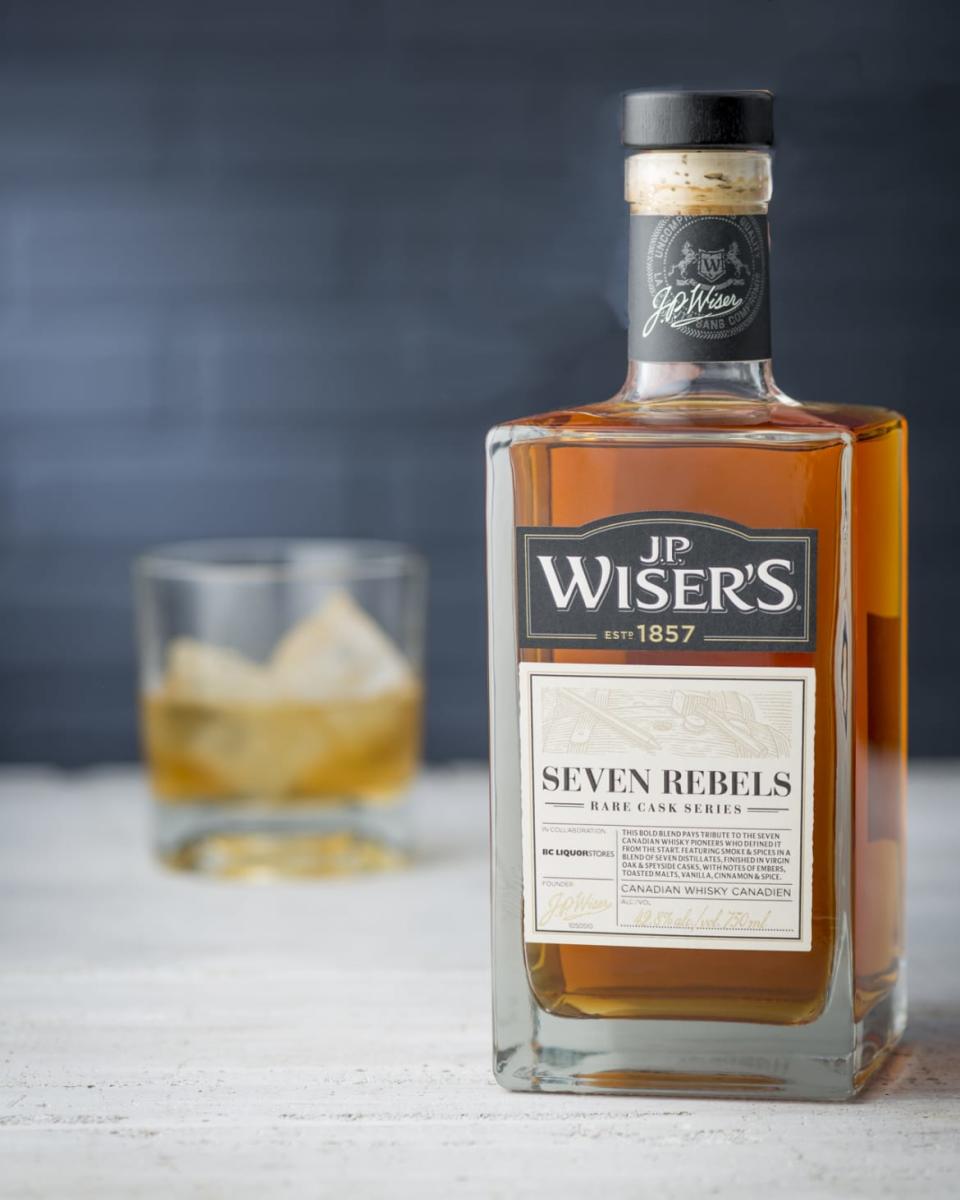
He’s doing some finishing experiments as well. “I’ve started putting Lot 40 into peated casks, and that might have some longevity,” Livermore said. “We put Pike Creek into a Canadian cabernet sauvignon cask. That was a surprise that went well. But how long are we from the consumer challenging us: ‘I’ve seen that before, a port barrel finish, everyone has that. What else can you give me?’”
Then Livermore said something tough about the whole idea of innovation. “I bet a lot of them are niche products, and they just do it to halo their main brands with these new things. It puts pressure on liquor stores and on distillers to have new stuff all the time. People want exclusivity at their store. And the amount of work it takes to do these things, the barrel picks and the three-barrel blends. And then they don’t want your standard brands. I’m sure companies sit down every year at the innovation meeting, and there’s someone who asks, ‘Why are we doing this again?’”
Greg Roshkowski is the general manager of the Brown-Forman Cooperage in Louisville, where they make barrels for Woodford Reserve, Old Forester, and Brown-Forman’s other brands. (Jack Daniel’s has its own cooperage in Alabama.) Roshkowski jokes that his title should actually be vice-president of wood. He has an extremely practical outlook on the whole thing, probably from being on the barrel side rather than on the whiskey side.
“With COVID, we’ve seen a retrenching in innovation,” Roshkowski told me. “We just made a $50 million investment here in Louisville in equipment that makes a tighter barrel. We’re focused on the yield of the barrel; from a sustainability point, getting the most of the tree into the barrel.”
Roshkowski and his group have also had success with a grooved barrel technique that was used for its new Coopers’ Craft brand. Plus, they’ve experimented with new woods and new species of oak, like chinquapin.
“But the innovation that was prevalent a few years ago,” he said, “that’s gone dormant. We might play with charring profiles, toasting profiles, but that’s about it. In the pandemic, people are buying, they’re not shopping. In and out, I want my Jack, thanks, bye.”
He sees it from other distillers as well. “The small guys who wanted something different in barrels, that’s slowed down. We’ve seen a lot of the craft breweries that were buying used barrels back off. People aren’t experimenting. It’s got people back to fundamentals, like yields in our mills. We’re basically hunkered down.”
Innovation in the whiskey industry is a blend of science, tradition, experimentation, economy, sustainability and practicality. People are looking for new flavors and how to sustain the tried and true, while getting the most out of finite resources.
The thing I like the most about all of it is that the ultimate benefactors are you and me—the drinkers. Whether it’s trying a new idea in barrel construction, or making sure there’s enough wood for the future, or even paring percentages off the next price increase, it’s to our benefit. That makes a good pour better. I’ll drink to that!
Get our top stories in your inbox every day. Sign up now!
Daily Beast Membership: Beast Inside goes deeper on the stories that matter to you. Learn more.

